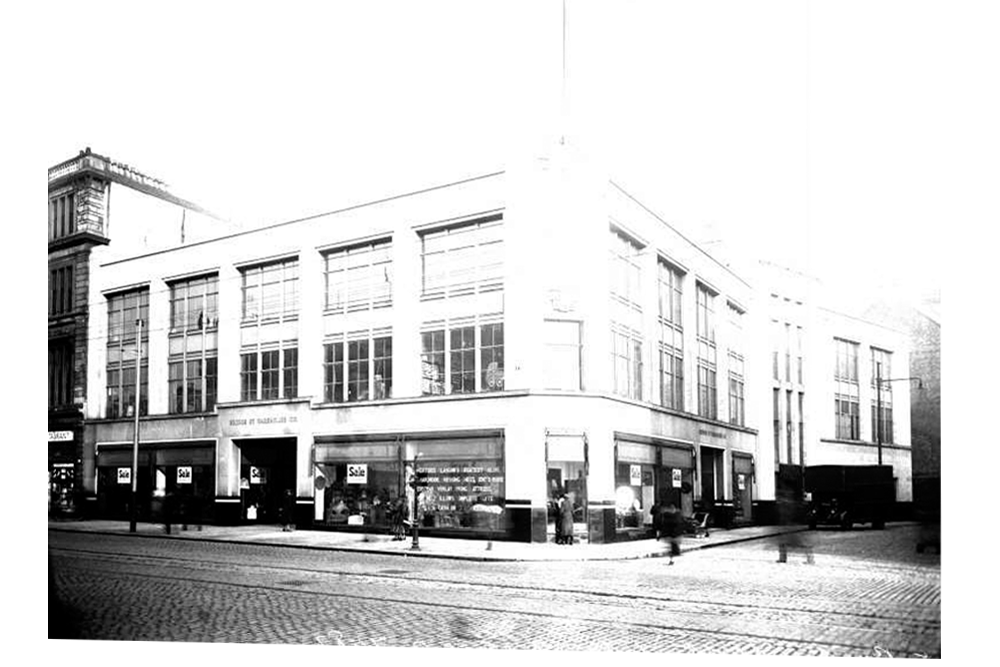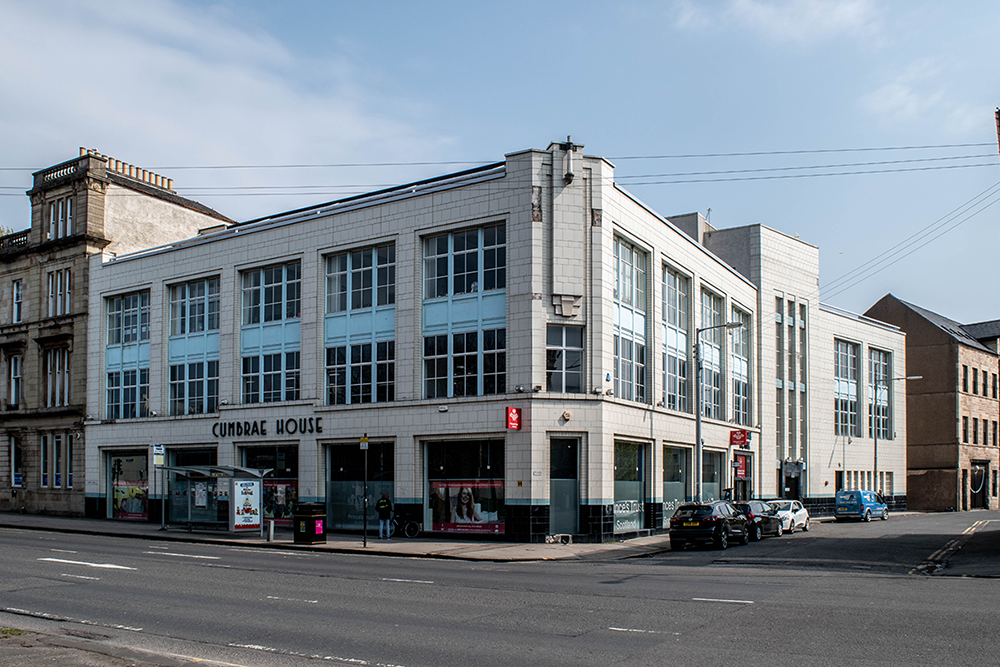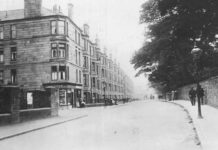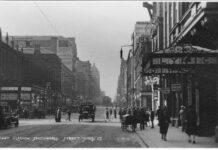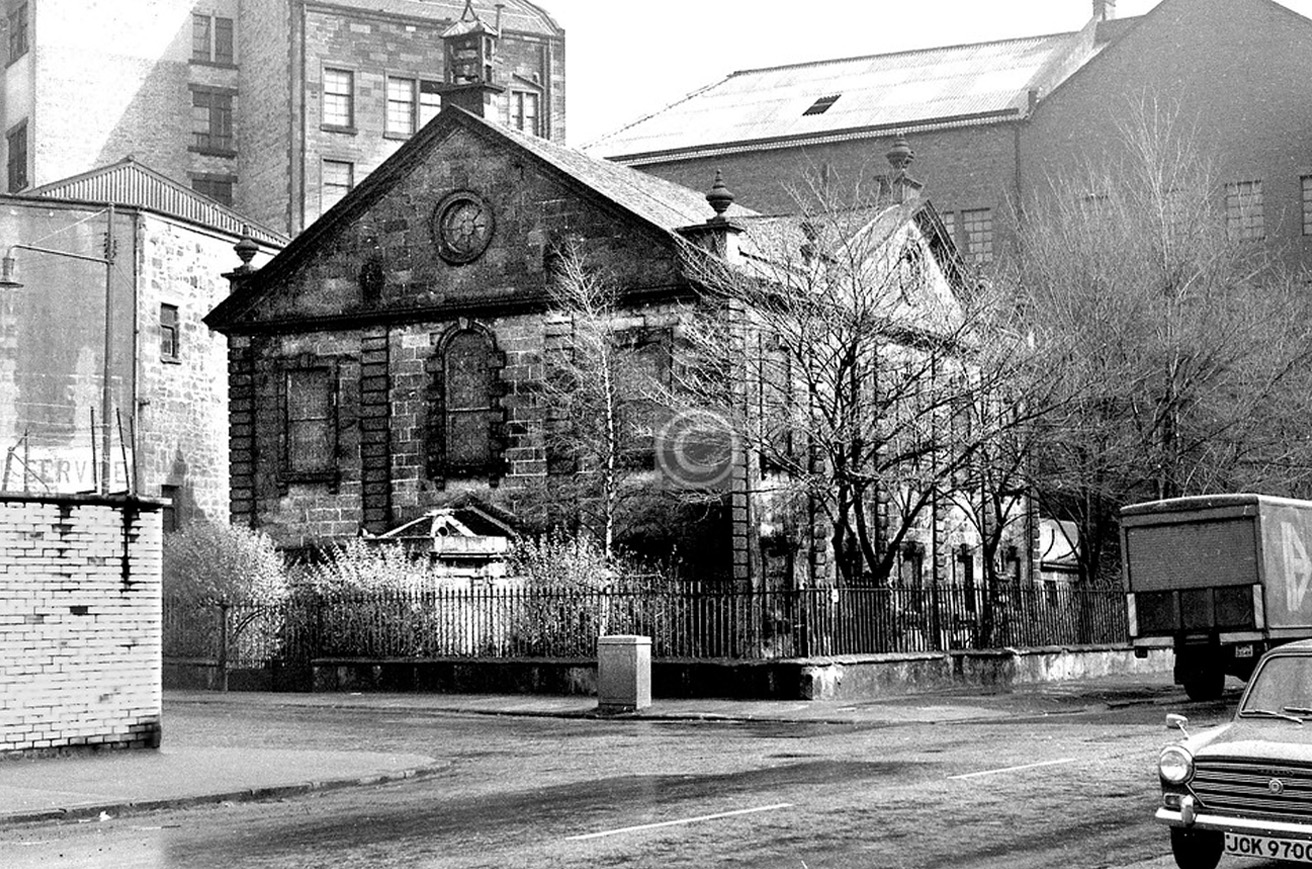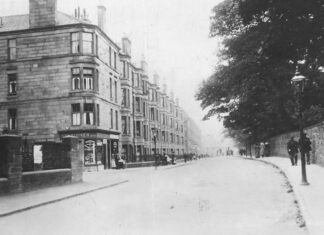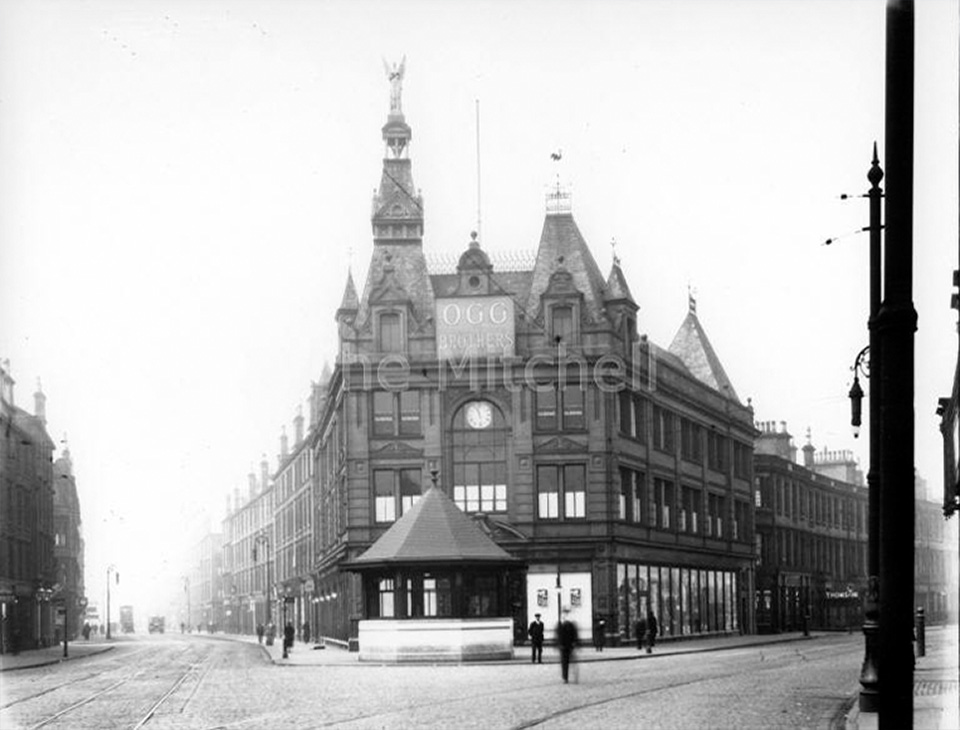You’ve probably passed this Art Deco corner a hundred times and never given it much thought. Perhaps its location, right next to the Georgian grandeur of Carlton Place, means that it’s often overlooked.
It was built in 1937 to designs by Launcelot H. Ross for Cowden’s Ideal Trading Stamp Company. It’s of steel construction and comprises 3 stories plus a recessed attic. The concrete details are by Considere Construction who, along with city City Engineer Thomas Somers, were responsible for the King George V bridge. Although it appears to be a masonry bridge, it’s actually constructed of reinforced box girders faced with Dalbeattie granite.
The facade is a contrast of black and cream tiles with steel-framed windows united vertically by pale blue metal curtain walls. It’s a typical Deco composition evocative of grander city centre locations such as Bothwell Street’s Scottish Legal Life Assurance building (E.G. Wylie, 1931).
I couldn’t find out much about Cowden’s but trading stamp companies are worth mentioning. Trading stamps were printed stamps given as a premium by retailers to customers and redeemable for cash or merchandise from the trading stamp company when accumulated in specified amounts. Retailers sponsor trading stamp programs as a means of building customer loyalty. The retailer purchases the stamps from the trading stamp company at a cost based on a small percentage of total sales. Trading stamps gave rise to the modern day phenomena of loyalty and reward schemes, such as air miles.

